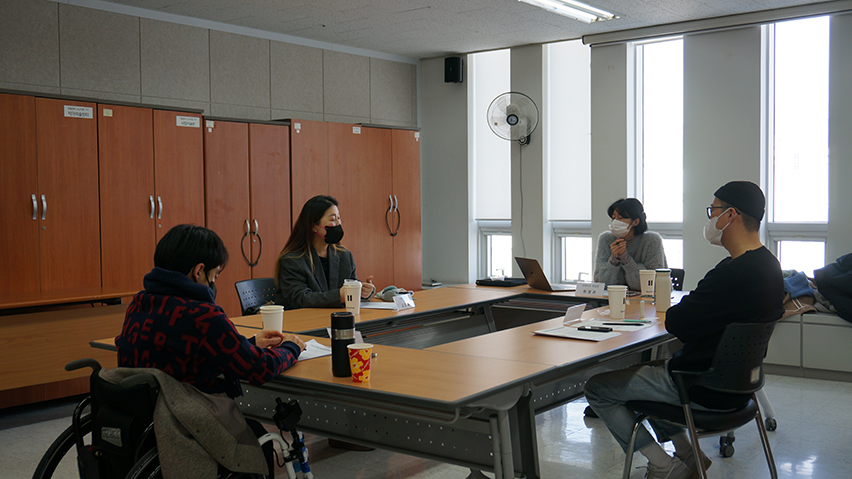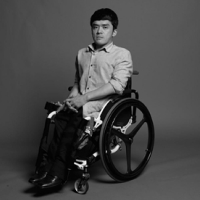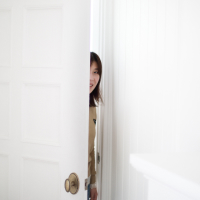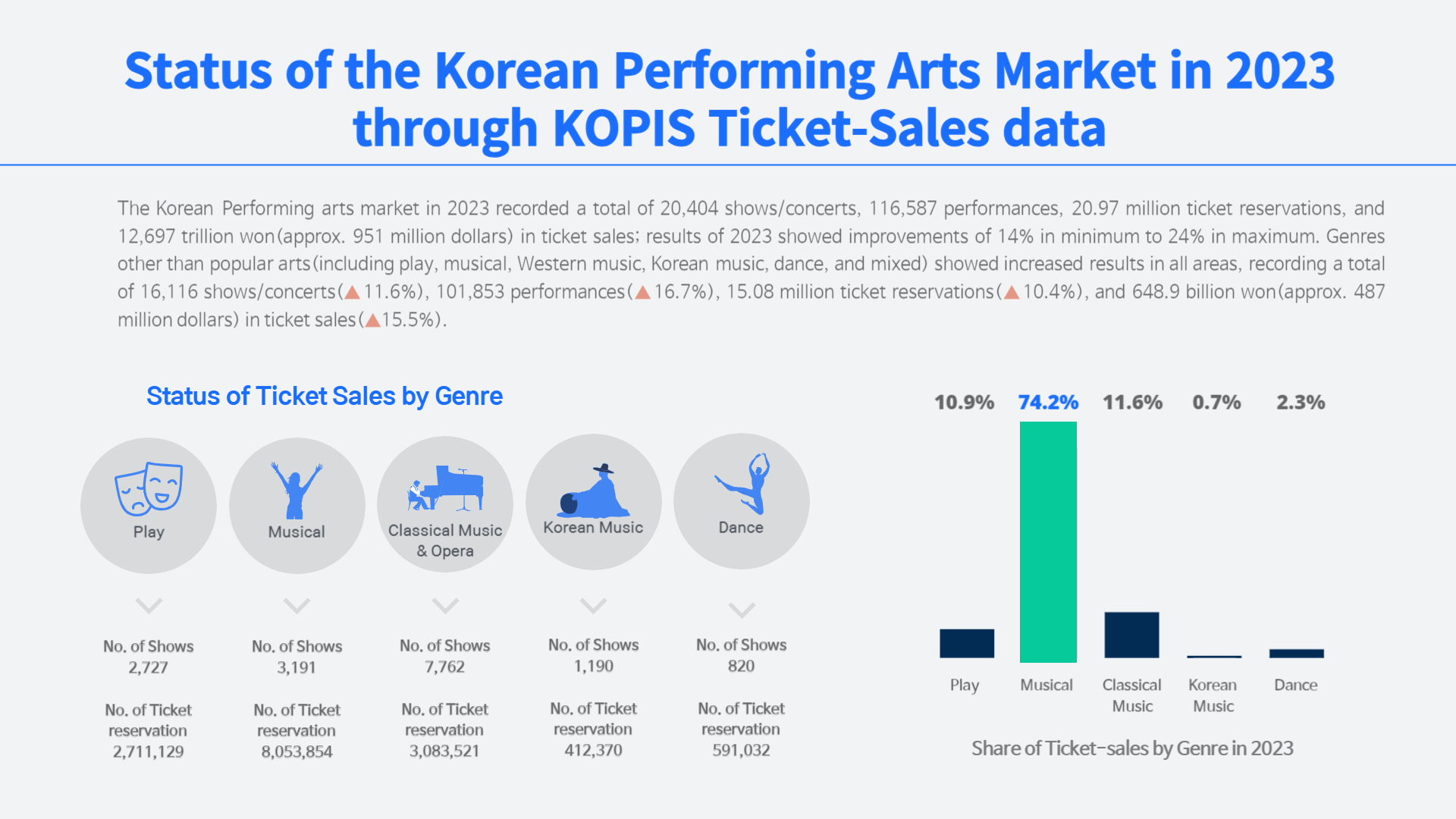Barrier-free, the Temperature at the Field
Moderator: Young-gyun Heo, Editor of TheApro
Panelists: Kim Min-sol (independent producer), Kim Wonyoung (dancer & lawyer),
Shin Jae-hoon (director, Box room)
TheApro invited panelists who have experience working in diverse roles including director, accessibility manager, and performer, to hear where they think barrier-free performing arts stands now in 2022 seeing from the field. As creators and members of performing arts, we sat down for a discussion in order to understand what barrier-free performing arts is; share personal experiences of our approaches to it; and reveal rougher edges of it.

Barrier-free: Where It Started
Young-gyun: Hello. Could you tell us about your role in the performing arts and share your experience of working with barrier-free performing arts? I am curious about how you first encountered the concept of barrier-free and decided to pursue it.
Jae-hoon: I am Shin Jae-hoon, Director of Theater Boxroom. I’ve had an opportunity to work with the creators of Talchum (a Korean dance performed while wearing a mask) by chance. The people I worked with were doing a particular type of Talchum called “Mundung Bukchum (Leper drum dance), a dance that expresses a certain disability. These people have been working with this dance for a very long time in the sense that they are handing down the tradition without raising any issues. However, from a few years back, the perception that something is off when they put the dance on the stage began to arise. About five years ago, we had a chance to discuss this concern, and we came to think together about what mask dance should be now and going forward in the future. We made a leap from those conversations, and now we are working with the barrier-free format. We raise the question of whether the stories we shared thinking that we are creating new values actually solidify prejudice against people with disabilities or minorities. That’s the mindset we have when we are working with the concept of barrier-free. This year, the National Theater of Korea proposed a performance called Teenage Dick, so we produced a barrier-free performance from the rehearsal stage with disabled performers.
Wonyoung: I am Kim Wonyoung, a dancer and lawyer. When I was in graduate school between 2011 and 2012, I formed a team for a project-based play with my friends from the grad school drama club and middle school, and my disabled friends. We made performances in the school, and I think this experience is what’s been driving me. We all agreed that our performance should be accessible to anyone including those who are in a wheelchair, deaf, or visually impaired. Looking back, our barrier-free productions were very crude, but we did experiment with text interpretation by providing interpretation via online chatting programs on smartphones that we rented out to the audience. Two years later, in 2013, we officially launched our team and started our work. At the time, we didn’t call our work barrier-free, but we certainly aimed to create a performance that ensures accessibility for everyone as much as possible. In that process, we learned about the UK’s Graeae. While researching Graeae, we realized that there was more to the concept of accessibility than what we were thinking of. We realized that accessibility should be integrated into the production of the performance, and that it is not just about delivering information to the audience. Then we began to do intensive research. After that, I became a lawyer and left the performing arts sector for a while, and came back a few years ago. And now that I’m back, I see other teams working on barrier-free arts, and there is support from public institutions.
Min-sol: I am an independent producer and accessibility manager. I am the first person to meet the audience, so I’ve had a lot of experience with performing arts works with poor accessibility. I’ve seen many cases where certain groups of people couldn’t join depending on the condition of the theater or performance. I saw organizers of the performance refuse entry because the kids were too loud, because people from remote areas didn’t know the proper manners of the audience, and because people were disabled, etc. Looking at this as a producer, I had a lot to think about. Just looking at the toilet, especially where there are basin faucets with automatic sensors, the basins are too tall for children to wash their hands in. I remember thinking about how many theaters would have booster cushions. I’ve been working as a producer at Seochon Space, Seoro for several years, and there was a school for people with a hearing impairment and a school for people with visual impairments nearby. So, I organized a reading performance with them, and the audience loved it. Through those experiences, I think my interest in barrier-free performing arts became more concrete. In the past, I mainly produced dance works, but I started to imagine how people with visual impairments could see the beautiful dance performances I organized. Then, I had a chance to interview Ms. McCamey, and learned that audio description is a well developed concept in Europe, and became more interested in it.
Barrier-free: Where it Stands
Young-gyun: It seems that there are not enough cases and precedents for us all because barrier-free works, both private and public, have only just begun. It is still in the early stage where people make rules and regulations by trial and error. Some venues, festivals, and events are making their own manuals. Korea Disability Arts and Culture Center, i-eum is carrying out a project such as “Support for Boosting Barrier-free Culture Programs.” We can say that it has been three to five years since we first saw this trend. What do you think about the current trend and ways of making barrier-free works? I am also curious to hear how the concept of barrier-free is being handled when you discuss it with your colleagues.
Min-sol: To be honest, I feel like barrier-free is becoming an accessory. It is great to see people trying things out and becoming interested, but some works make me frown saying “It is better if they had not tried to do that.” I think the problem usually starts when people think barrier-free performances are special. It also seems that some do it because everyone else is doing it. Personally I think a good way to approach this is “to do as much as one can.” Because there are inevitably unavoidable circumstances physically. For example, there are theaters like Hyehwa-dong St. 1 where it’s too small to have electric wheelchairs inside. Then alternatives should be found, and try what can be done in my opinion. Barrier-free is not a fashion item. Also, because I work as an accessibility manager, I notice that my perception on this particular position or role is quite different from how others see it.
Wonyoung: I do think that it’s expanding too rapidly. Of course, some can argue that the more is the better. However, I think we do have to look at this expansion with a grain of salt. For example, when it comes to involving sign language interpreters, some performances can involve them from off, but some others won’t be able to. I heard that some groups make a model stage to try to make their show barrier-free from the production stage. There are many groups who think that they must do everything, while many others do nothing. The first thing a barrier-free performance can try is to have the ushers to wear masks for lip-reading. Then, emergency evacuation can become accessible as a start. In my opinion, we should not make an ideal model for creating barrier-free work, and see whether we can follow through with it. Sometimes sign language interpretation cannot be involved from the beginning because of budgetary constraints. However, subtitles can be provided. If it is too difficult to provide open subtitles, closed subtitles can be provided as well. I think at the moment the expectation is too high and there is pressure that it has to be perfect.
Min-sol: I agree with Wonyoung. I think we should be making works that are a bit more accessible. Putting the adjective, barrier-free in front of the name definitely gives you a bit of uneasiness because of the pressure. You find yourself doing self-censorship thinking “Can I call it barrier-free after doing only this much?” To take masks for lip-reading as an example, producers have always found a way when the audience has needs even when there is no defined concept of barrier-free. For example, providing audio description even when it is not produced with one, or providing script in advance instead, giving an explanation about the work separately, or doing a touch tour upon request, etc. producers have been always finding a way. There is no such thing as the right answer as we all know.
Wonyoung: Ideas like “oh, audio description experts are the ones who must do the job, and it will take a lot to involve them” would mean a very difficult starting point. Even if you cannot do it in your performance, you can have one staff member saying “there are two performers on the stage right now” giving an explanation, a lot more people will be able to experience the performance. What’s important is that you care and put an effort to make it barrier free even if it is not in a perfect manner. Improvising on stage by using your wits, the kind of efforts we were making to make the performance more accessible albeit not perfect has become something more difficult or people shy out from doing that since we have institutions and support.
Jae-hoon: I don’t think we will ever get a clear-cut answer, and there is room for a debate here and there. Previously accessibility was a separate area managed by the accessibility manager, but now the creative team are discussing it in a comprehensive manner.
Young-gyun: It seems that we are in the process of making social conventions including considerations for creation or considerations for the audience more delicate. I think we have to pay careful attention to fine tuning from the beginning. I am curious to hear about the conversation and preparation process at the integrated level that Jae-hoon mentioned. How much are we ready when it comes to physical and human conditions regarding development, rehearsal, presentation and meeting the audience?
Jae-hoon: I think another way to call the “fine tuning” you mentioned is consensus and agreement from all members and departments involved in the performance. For example, when you think that everything is well prepared, something can go wrong in the phone reservation system, or sometimes the department who is in charge of the theater setup questions your request for certain preparation. While preparing for the barrier-free performance, I came to realize that it’s not just people who you see around the stage, but everyone with even the smallest involvement is linked to the performance. In the end, everyone has to be involved in the all around discussion, and otherwise something somewhere will go wrong.
Young-gyun: I think the “consensus and agreement” of the people who make the performance is the beginning and end of barrier-free work. The ‘degree and depth’ of the agreement will be the next criterion.
Min-sol: Some say that there are many accessibility managers, others say there not many, but whoever is working in the field have not yet established the standardized practice yet and it is in the process of getting there. Depending on what accessibility managers focus on, such as directing and planning, they tend to have different approaches. In my case, I don’t have an accessibility manager for the work I make as a producer, and instead I do the work myself. And when I participate in the production as an accessibility manager, it seems like I keep getting in the way. Every time, I make demands saying it’s necessary, and in many cases, my proposal does not go down well.
Jae-hoon: The door to the rehearsal building of the National Theater of Korea is a hinged door. Since the two actors in Teenage Dick, Jo Woo-ri and Ha Ji-sun use wheelchairs, accessibility issues were raised. It took a while, but we changed the hinged door to a sliding door. The dressing room was also renovated and a bathroom for disabled people was put in. I was amazed that all these changes were achieved, but at the same time, I did wonder whether the same would be possible elsewhere.
Various Types of Accessibility Managers
Young-gyun: I want us to discuss the term, accessibility manager. Where did the term and the concept originate? I am curious to hear who can be called accessibility managers in Korea, what they do, and what kind of education and support they receive.
Wonyoung: ‘Accessibility Manager’ is a British term and its direct translation into Korean language is used in Korea. As far as I know, In the UK, groups gathered with Graeae at the center and institutionalized the role. There were cases of the creators who were trained by that institution getting the in-house accessibility manager position at Australian theaters.
Min-sol: Just as each director has a different style, all accessibility managers do different things. Taking me as an example, although it varies depending on the type of the production, I get involved from team workshops to the direction of promotional materials even before ticket opening. I join the producer and director when they decide the wording to be used in the performance pamphlet. Whether to write subtitles, provide sign language interpretation, and prepare for complaints. I also get involved in the decision making of whether subtitles will be used or whether sign language interpretation will be provided. And I prepare the team so that we can respond to any complaints. There are some people who focus more on the position of directing the work as they play the role of accessibility manager, but in my case, I think more from the perspective of the audience.
Young-gyun: On the one hand, I wonder if there are too many problems that the accessibility manager alone has to deal with. It seems that safety devices for accessibility managers will be needed someday, and that each manager needs to think about one’s own area of expertise and prepare oneself for it. In preparing for the audience response or the physical environment of the theater, I think that the platforms should systematically prepare for each situation rather than having accessibility managers change for each production.
Jae-hoon: Depending on who you work with, I think that the accessibility manager’s job and status change. I think of myself as a director who relied heavily on the accessibility manager. When even a small thing happens within the team, I ask for input. And in the end, the accessibility manager plays a role in bringing all the aspects of the work together as a whole.
The limitation of Barrier-free
Young-gyun: I think there are blind spots regarding the audience. In terms of audience development, how is the way the audience watches the show changing? Do you feel that the existing audio description, sign language interpretation, and text commentary methods have improved a lot as an accessibility tool? And also has there been improvement in the means of transportation support before and after the performance? Also, although it is collectively referred to as barrier-free, there are numerous types of disabilities. There are many creators with various different bodies who cannot participate in the performance. I think what’s currently considered as a barrier by the barrier-free performing arts is limited. What is your view on this?
Min-sol: I think it is limited to audiences with a hearing impairment and visual impairments and wheelchair users. There were also creators saying that they did not want to try barrier-free that would harm their work. If we understand the term barriers as literal barriers, an effort to present the show at times that people who work as a caregiver can come to watch it, for example, at 1:00 pm and 11:00 am, can also be called an effort to make the work barrier-free.
Young-gyun: In fact, an actor who returned after being away from the stage for several years once expressed that it was difficult to adapt to seeing sign language interpretation being performed throughout the performance. They said “who is ensuring my scenes? Who is protecting my acting?” It was the first time for me to think that, sign language interpretation being there right behind you all the time could interfere with the actor fully immersing themselves in acting on the stage. If so, providing sign language interpretation only in show showings rather than all showings could be something we could try. What’s your opinion on this?
Wonyoung: I think it is appropriate to have a sign language interpretation for all showing if the sign language interpretation itself is incorporated in the performance of the creative work. However, if that’s not the case, providing it in some showings is an effort that is meaningful enough. However, whether you are an actor or a director, if you cannot work in the way you want to work because there is a sign language interpreter, I think you need to find another way. I do accept that I can’t do ballet dance. Likewise, I believe that there are performances that people with visual impairments simply cannot enjoy. Barrier-free being incorporated because one feels the pressure of ethical responsibility, will overwhelm the creative work.
Young-gyun: In the case of the works Jae-hoon makes at the Greatest Masque or Teenage Dick, sign language interpreters were on the stage acting along the actors while providing a sign language interpretation on a one-on-one basis. What was the reason behind that choice? Did it need a lot of persuasion during the process?
Jae-hoon: In Teenage Dick, all the sign language interpreters wore costumes similar to the characters, and they also put on heavy makeup. In the Greatest Masque, I had the sign language interpreter accompany performers one-to-one. But it wasn’t a decision I made from the beginning. It started when I was thinking about how I can make a better barrier-free work. After receiving suggestions from Teenage Dick’s makeup and costume designers, we discussed it with the sign language interpreters, and we made such decisions as a result. In the case of the works in the Greatest Masque, The masked dancers said that with a sign language interpreter by their side, they felt less shy and more encouraged by their presence. I think the most important thing is to have a comprehensive approach where you exchange ideas with each other. On the other hand, there was a problem that sign language interpreters looked more prominent than actors. By the way, there were people who raised that issue saying that sign language interpreters stand out more than the performers.
Min-sol: There are probably many cases where sign language interpretation cannot be included due to budget issues. However, in the case of the directing choice mentioned before, I think it will be different depending on how the translation team tends to work. Each team differs in whether they work more closely with the performers or focus on sign language "interpretation." I do think that having professionals is important. While working with sign language interpreters, I realized that, just like foreign language interpretation, they constantly hold meetings to understand the meaning and context. I think in the end, what’s most important is the intention of the directors.
Young-gyun: From the point of view, when you hear a voice or imagine or see a person, it seems to be recognized as a person. When subtitles play their part in a performance, they are heard and seen as a statement with a personality. For example, when I see a script for a performance that has five performers, I sometimes see 10 instead because of that reason. From the audience’s point of view, I think the changes brought by what barrier-free performing arts’ is trying to achieve is quite big. It may also mean that the directors have more responsibilities. Shall we talk about audio description for a moment When I listen to audio description on stage or in an exhibition, I feel that there are various methods of description or narration. Just as each person expresses it differently even when looking at the same scenery, a completely different commentary will be made depending on the audio describer. I think if there are 10 audio description writers, there will be 10 different audio description scripts.
Jae-hoon: That is right. They are very different. Some people say that you should clearly express "I took one step, two steps" without using descriptive languages or literary expressions. Some people use a lot of literary expressions. In my case, the latter was better. Recently, during a performance in local provinces, we used a closed terminal to support voice commentary, and the audience was very happy with what we did. Maybe it’s because they thought of it as a kind of a docent.
Min-sol: Most likely the reason why audiences without disability were happy with the audio description was because they think it interprets and explains the work. It was easy to appreciate the work because there was an explanation of the scene rather than a description of the action. When I attended Ms. Rose’s class, she said that there are British, European, Australian, and American styles for writing audio description scripts, and they are all different. Above all, it seems that the most important thing in audio description is the audio describer.
Young-gyun: To look at it simply, it feels different depending on whether the audio describer’s voice is female or male.
Wonyoung: Who is doing the audio commentary is really important. I also find the gender relationship between the performer on stage and the audio describer interesting.
Hopes and Expectations
Young-gyun: Lastly, please tell us about your overall impressions regarding barrier-free this year. Also, if there is something that you would like to see developed publicly and privately next year and beyond, please tell us briefly. That will be a nice way to wrap up today’s discussion.
Jae-hoon: I thought that barrier-free is not an accessory, but there are many things that happen when different worlds meet. Until now, I was invited as a director and tried to make barrier-free performing arts outside of my own theater company. But next year, we decided to try making barrier-free performing arts within our theater company. Before going into the audience, I want to focus on how far we can push the boundaries as creators in my effort.
Wonyoung: Yesterday, I went to the board of directors meeting at the Korea Disability Arts and Culture Center, and the budget for disability arts increased. People with disabilities are supported regardless of their political stance, because it is seen as good work. However, there are still very few creators with disabilities. I hope there will be as many opportunities for creators with disabilities as how much interest is in barrier-free performing arts.
Min-sol: I met colleagues who had not had opportunities to work in accessible performance, and they felt a lot of guilt for not having done it. I tell those colleagues of mine that they only have to do as much as they can. Personally, I would like to create guidelines on which accessibility devices are available and are not available.

Kim Wonyoung
Performance creator and writer. Wonyoung participated in works including Becoming-dancer, Love and Friendship Equality Act, Recognition Struggle; Artist version as an actor or dancer. He is a published author and his books include The Case for “Wrongful Life”. He worked as an attorney at the National Human Rights Commission of Korea and the Duksu Law Office.

Shin Jae-hoon
He is the director and writer at the Theater Boxroom. He aspires to fill the stage by emptying it. He is also actively collaborating with creators in the field of traditional art. He recently directed Agamemnon, The Tale of Gold Birds, The Story of Story, and Teenage Dick.

Kim Min-sol
She is a sad theater expert who dreams of becoming a grasshopper but works like an ant. She works as an independent producer and accessibility manager, and she occasionally writes audio description scripts. She believes that acting should be based on affection for human beings, and she is one of the people who loves the audience the most. She works as an independent producer, and she worked as accessibility manager for the production of Cowboy on the Rooftop and 2022 SPAF(Seoul Performing Arts Festival).








 PREV
PREV

.jpg)
.jpg)
.jpg)
.jpg)











